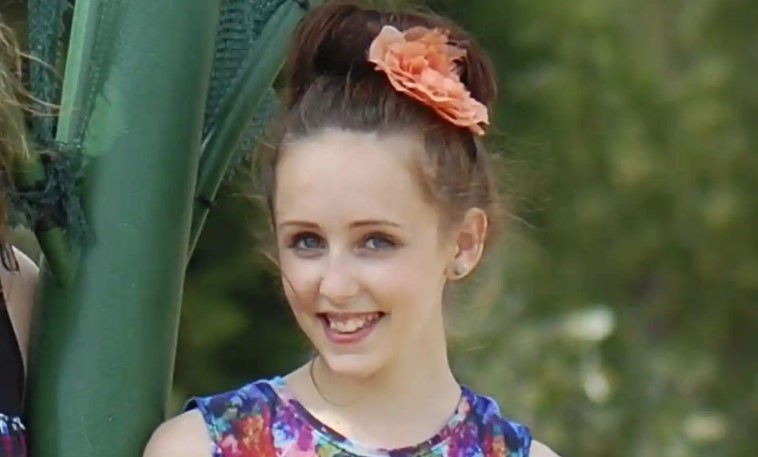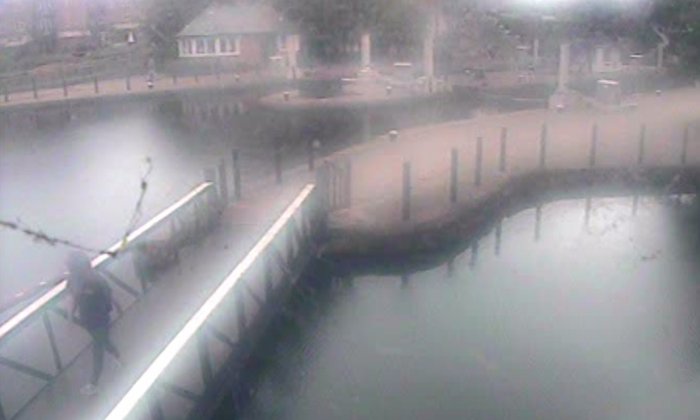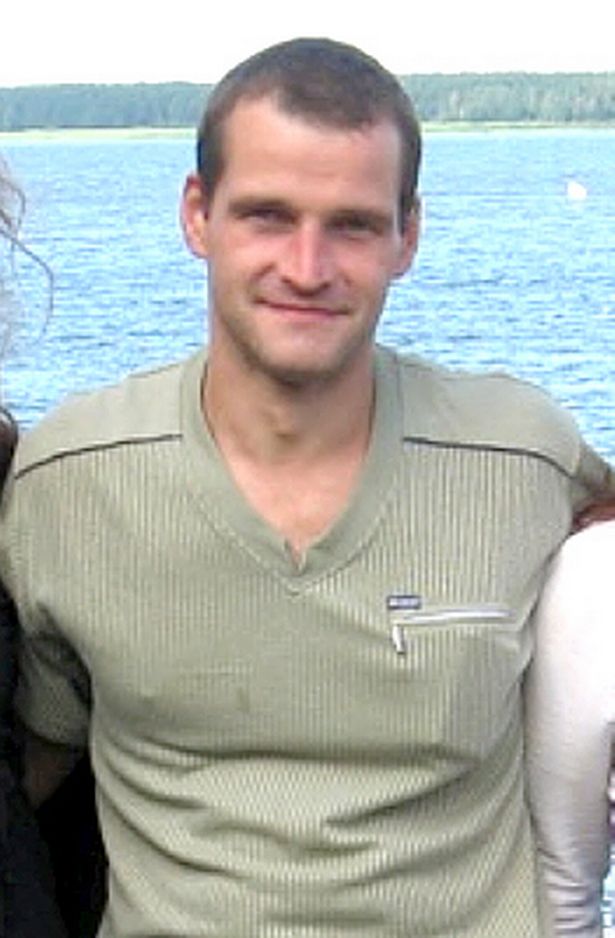When 14-year-old Alice Gross goes for a walk in West London and doesn’t return, her disappearance launches one of the largest searches the city has ever seen.
Episode Media




Episode Sources
- A Never Ending Nightmare: The Murder Of Alice Gross
- Murder of Alice Gross – Wikipedia
- Alice Gross disappearance: Search ‘largest since 7/7’
- Alice Gross: Police release CCTV footage of teenager as parents appeal for her safe return
- Missing Alice Gross: Final Text Message to Father Indicates Teenager was on Way Home
- Alice Gross disappearance: police search for missing man
- Missing schoolgirl Alice Gross – family releases new images
- Body found in river is Alice Gross, police confirm
- Alice Gross disappearance: Suspect murdered wife in Latvia
- Alice Gross’s mother blames government for failures over daughter’s killer
- Alice Gross: why did police not know about killer’s past?
- CCTV shows Alice Gross murder suspect Arnis Zalkalns
- Alice Gross death: Inquest opens
- What we know about the murder of Alice Gross
- Alice Gross: Timeline of the Met police investigation
- Alice Gross murder: Schoolgirl ‘unlawfully killed’ in sex attack
- Alice Gross murder suspect Arnis Zalkalns not checked
- Alice’s Youth Music Memorial Fund
Episode Transcript
Welcome back to Bite-Sized Crime. This week we’re traveling across the pond to explore the case of Alice Gross, a teenager who went missing in London in 2014. This episode discusses sensitive topics and includes graphic descriptions, so listener discretion is advised.
Alice Gross was born on February 14th, 2000, in London, England. Growing up, she had a close relationship with her parents, Rosalind and Jose, and her older sister Nina.
Alice was an energetic, lively girl, described by those who knew her as a loyal friend, full of compassion for others. Alice was also a talented musician, playing several instruments and writing her own songs. In 2014 she competed in a local Battle of the Bands, performing her own original compositions. Alice wanted to have a career in the music industry someday, and she had the passion and talent to make it happen.
But Alice was also struggling with depression and had been diagnosed with anorexia, an eating disorder characterized by a distorted body image and obsession with maintaining a low body weight, often through lack of food and compulsive exercise. In August of 2014, Alice was undergoing medical treatment for the disorder, but she was still having a difficult time. She often went on long walks around West London, sometimes being gone for hours.
On the afternoon of August 28th, Alice left her home in Hanwell around 1:00 with her cell phone and backpack. The weather was warm and overcast, and Alice was wearing jeans and a t-shirt, a light cardigan, and her blue Vans shoes. She told her mother that she would be home by 6, since her father was cooking dinner for the family. Around 3:00, Alice texted her father to ask if he was home yet – she had forgotten her house key and wanted to make sure someone could let her in when she got there.
But Alice never arrived home.
When 6pm came and went, Alice’s parents wondered why she hadn’t returned yet. By 7, they knew something was wrong. Alice wasn’t answering any calls or texts – had she fallen ill on her walk and collapsed somewhere? Rosalind and Jose called the police and reported her missing.
Immediately, a search team set out to canvas the area where Alice likely had been walking. The story was quickly picked up by local news stations, and tips began pouring in from London residents who had seen Alice on her walk. With this information, investigators were able to pull surveillance footage from around West London and retrace Alice’s steps. She was spotted on over a dozen cameras within a 4-hour period.
At 1pm on August 28th, Alice was seen walking past the Hanwell rail station shortly after leaving her house. She then headed down the river path before walking west towards Ealing Hospital. At 1:26pm, cameras spotted her walking towards the Grand Union Canal towpath, a popular walking path that follows the length of the canal as it flows towards the River Thames. At 2:23pm, Alice was seen near a Holiday Inn hotel along the canal; at 3:45pm, she was spotted by cameras at Brentford Lock, only a minute’s walk from the hotel. It’s unclear whether Alice continued walking along the water for that hour-long gap, or if she stayed in the immediate area where there are multiple shops nearby. But by 4pm, she was seen along the towpath again, headed north towards Hanwell.
The last sighting of Alice was at 4:26pm. She was seen walking along the canal under the Trumpers Way Bridge, about a mile from her house.
In all of the surveillance footage, Alice looks like any young girl out for a walk. Her head is held high, and she is walking with purpose. She doesn’t seem anxious or scared. So what happened after that last image of her under the bridge?
Unfortunately, there weren’t any easy answers, but the search for Alice continued. The Metropolitan Police knocked on doors and searched nearby parks and bodies of water. The search for Alice involved over 600 officers; it was London’s biggest police operation since the terrorist attacks of July 2005.
On September 4th, a week after Alice disappeared, police announced that her backpack had been found by the River Brent, not far from where she had last been seen. Inside the bag were her lunchbox, a pair of underwear, and her blue Vans shoes.
Police turned once again to the public for help, releasing segments of the surveillance footage and asking residents to look out for Alice’s missing iPhone, which they believed to be the key to her disappearance.
According to her phone data, Alice was near the River Brent when she sent her last message to her father around 3pm. After that, there were no more incoming or outgoing calls or texts. The phone last connected to the network just after 5pm before it was turned off or disabled.
By now, investigators were looking into all possibilities. Alice was a typical teenage girl, had she decided to run away from home? According to her family, Alice’s behavior in the weeks before her disappearance hadn’t raised any concerns. Her last text certainly implied that she was coming home, and she had been walking in the direction of Hanwell when she vanished. It seemed unlikely that she had voluntarily run away.
Alice’s struggle with depression was another concern. Had she chosen to take her own life? As the days and weeks passed, this seemed less and less likely. Even if she had drowned in the river, her body would have surfaced by now.
There was also the possibility that Alice had planned to meet up with someone on the day she disappeared, but nothing in her phone or social media supported this theory. It seemed that Alice truly had just gone out for a walk, something she was doing more and more as she battled with her anorexia.
Her mother Rosalind told reporters, “What we’ve discovered over the course of her disappearance is that she was probably walking on her own more frequently than we realized and perhaps in different areas than we realized. But I wasn’t surprised that she was seen coming home – that would be much more in keeping with her character, with her behavior, that she was on her way home.”
A few days after the surveillance footage was released, police arrested two men on suspicion of murder, but both were released after questioning. The Metropolitan Police stressed that Alice’s disappearance was still being treated as a missing persons case and that they were still actively searching for evidence that might lead to her recovery.
During the course of the investigation, police came across another missing person in West London. Forty-one-year-old Arnis Zalkalns was last seen at his home in Ealing on September 3, 2014. As they dug into his case, investigators uncovered a sordid, violent history.
Originally from the country of Latvia, Arnis Zalkalns had been convicted of murdering his wife in 1998. According to court documents, Zalkans stabbed and beat his wife to death before burying her in a shallow grave. He served seven years in prison in Latvia; after his release, he moved to London and took up work as a builder. In 2009, Zalkalns was arrested for indecent assault on a teenage girl in Ealing. The alleged victim declined to make a statement against Zalkalns, and the case was dismissed.
Zalkalns’ past raised several red flags for investigators, but it was the surveillance footage that provided the connection to Alice.
At 4pm on August 28th, Zalkalns was caught on camera cycling along the path at Brentford Lock, just 15 minutes after Alice passed by the same spot. Because they were traveling in the same direction, Zalkalns would have passed by Alice around 4:10pm. Alice was last seen on camera at 4:26pm under the Trumpers Way Bridge.
But the surveillance footage doesn’t end there. At 5:49pm, Zalkalns is spotted on his bicycle, crossing Uxbridge Road – less than a mile from Trumpers Way Bridge. Why would it have taken him nearly 90 minutes to travel a single mile?
Perhaps the most chilling revelation from the footage is the fact that between the 4:00 sighting and the 5:49 sighting, Zalkalns appears to have rolled up his pants legs, indicating that he may have been in the water.
Two hours later, at 7:45pm, Zalkalns was spotted again on Uxbridge Road, cycling back towards the area where Alice was last seen. At 8:50pm, Zalkalns emerged from the dark towpath onto the main road, this time wearing different clothes. He wasn’t spotted again until just before 7:00 the next morning, heading back to the same location.
On September 16th, police officially announced that they were searching for Arnis Zalkalns in connection with the disappearance of Alice Gross.
Zalkalns had last been seen by his partner on the evening of September 3rd, when he left his home in Ealing. He did not take his passport, indicating that he wasn’t planning to travel far. On the morning of September 4th, Zalkalns was seen at a shop in South Acton, where he purchased food and water. His bank account and cell phone hadn’t been used since. His family and friends had no explanation for where he had gone.
After declaring Zalkalns a suspect, investigators conducted multiple searches at his home in Ealing, gathering DNA samples and other items that may be relevant to the case. They also searched a second property linked to Zalkalns in Hanwell.
On September 19th, police announced that they had recovered a red mountain bike believed to belong to Zalkalns. But even as the search intensified, there was no sign of Alice.
On September 25th, a month after her disappearance, police conducted a reenactment of Alice’s movements on the day she vanished. An actress dressed in the same outfit Alice was wearing and carrying an identical backpack retraced the path Alice took on August 28th. Police hoped that passersby would see the reenactment and remember seeing the real Alice, triggering memories that could be useful to the investigation.
But five days later, on September 30th, police made a gruesome discovery: the body of Alice Gross submerged in the River Brent, less than a mile from where she was last seen.
In a public statement, Commander Graham McNulty of Scotland Yard said, “Our work at this scene is crucial to ensure we capture all the available evidence allowing us to identify who is responsible for this dreadful crime. This may take some time, and I ask people to remain patient. I can confirm that significant efforts were made to conceal the body.”
Alice’s family was devastated. In a statement released to the media, Rosalind and Jose said, “It is difficult to comprehend that our sweet and beautiful daughter was the victim of a terrible crime. Why anyone would want to hurt her is something that we are struggling to come to terms with… Alice was a loving and much loved daughter and sister, a quirky, live spark of a girl, beautiful inside and out. She was a funny companion, a loyal friend, both passionate and compassionate, and so talented with a bright future ahead of her. She brought so much joy to our family and those who knew her.”
On October 4th, police made another shocking announcement: they had found the body of Arnis Zalkalns. It appeared that he had died by suicide in a remote, wooded area of Boston Manor Park. The body was badly decomposed, indicating that he had died several weeks prior.
Although the main suspect in Alice’s case was dead, the inquest into the circumstances surrounding her death continued. Finally, in January of 2015, the Metropolitan Police released the files of evidence they had against Zalkalns, stating that had he lived, they would have charged him with Alice’s murder.
According to investigators, Zalkalns passed Alice on the canal towpath around 4:10pm on August 28th. It’s likely that Zalkalns then found a hiding place off the side of the path where he could watch unnoticed as Alice approached. At some point after she passed under the Trumpers Way Bridge, Zalkalns attacked Alice.
Alice’s naked body was found in a fetal position, tied up and wrapped in trash bags – bags that matched those found at Zalkalns’ workplace. Her body had then been weighted down in the shallow water under a bicycle wheel and several heavy bricks, then covered with sections of a tree trunk, presumably to conceal her from anyone passing by.
Zalkalns’ DNA was found on a cigarette butt at the crime scene and on Alice’s shoe, which had been placed in her backpack. During a search of Zalkalns’ home, police uncovered part of Alice’s iPhone buried in his back garden.
In July of 2016, an inquest jury concluded that Alice Gross had died at the hands of Arnis Zalkalns. They ruled that her death was consistent with compression asphyxia, in which pressure on a person’s chest prevents them from breathing.
Alice’s mother read a statement to the jury, saying that the family was stunned that the government had not been aware of Zalkalns’ prior conviction in Latvia, that they had not conducted a proper background check during his arrest for assault in 2009. At the time, both England and Latvia were members of the European Union, and communication between law enforcement should have been more streamlined. But there was no policy for background checks in 2009, and the process for obtaining one was complicated and tedious.
After the verdict was read, Alice’s mother told the jury, “Like Alice, our family is in favor of freedom of movement and all the good things it has brought to our lives. We do not believe that any citizen deserves to be treated differently based on their race or nationality. Our only concern has been to ensure that there are fair and proportionate rules governing the movement of serious criminals within Europe, whether that is a Latvian coming to the UK or a dangerous citizen traveling abroad.”
Since 2015, Alice’s family has advocated for more efficient policies regarding background checks on foreign suspects in the UK. Much progress has been made, including increased staffing for the criminal records office and more defined procedures for conducting background checks across borders.
Sadly, we will never know if a proper background check would have saved Alice’s life. Instead, her family and friends are left to mourn the loss of a bright, talented girl whose future was stolen from her.
Alice’s family established a memorial fund in her name to benefit the National Foundation for Youth Music, a community-centered initiative from the British Council. To date, they have raised over £80,000 in Alice’s name.
